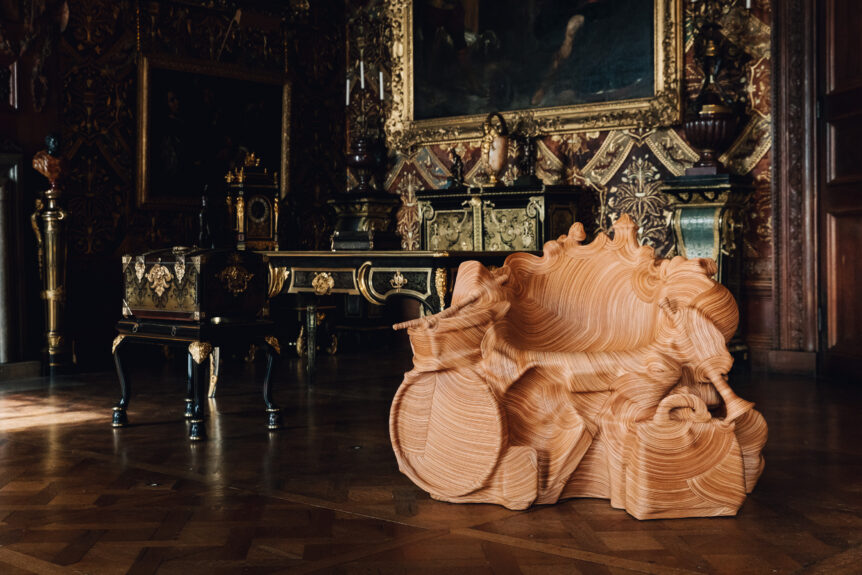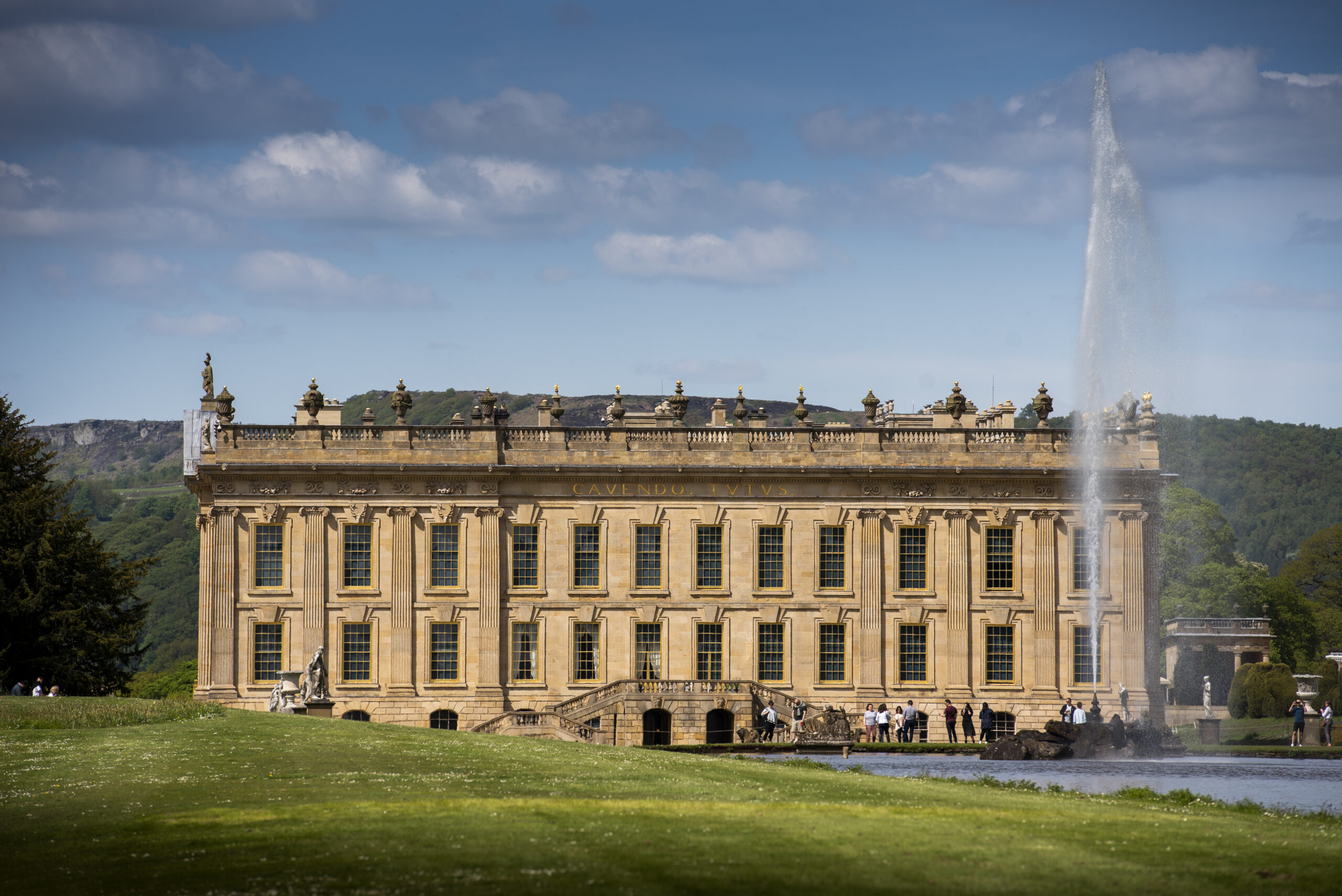
Chatsworth House, home of the Dukes of Devonshire, England. All photographs © Chatsworth House Trust.
The practice of inserting works of contemporary art and design into historic houses has become something like a jackhammer in the curatorial toolbox—singularly effective, and providing press writers with recourse to such alluring artspeak terms as “disruption” and “activation.”

Lighting from Michael Anastassiades’s (1967–) Bamboo Lamp series, 2021.
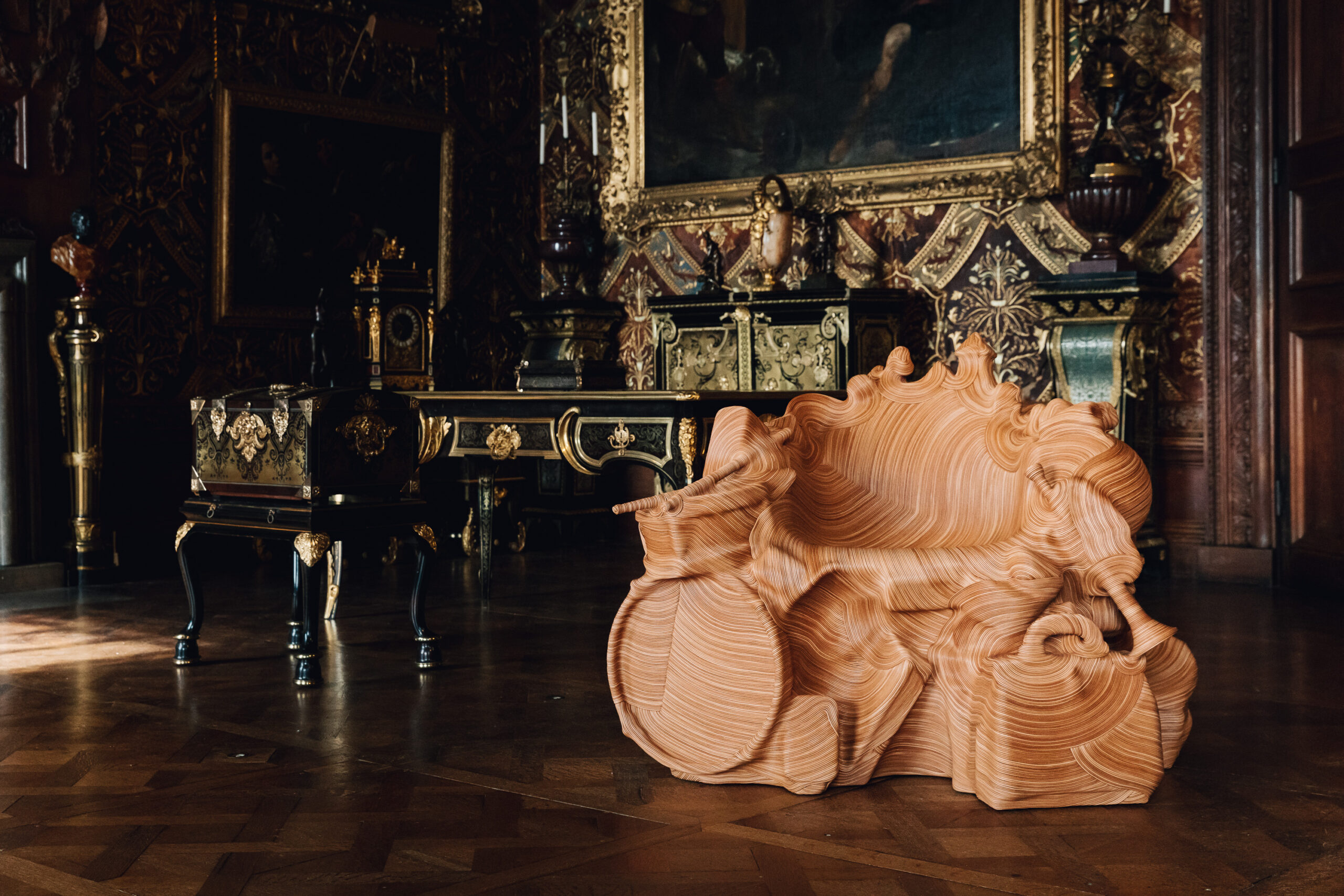
Salvage Series Chatsworth chair from Jay Sae Jung Oh’s (1982–) Salvage series, 2021.
And yet sometimes a nimbler curatorial craftsman appears, as he does in the organization of the exhibition currently on view at the stately and storied English manor Chatsworth House, Mirror Mirror: Reflections on Design at Chatsworth. There, design scholar, independent curator, and ANTIQUES contributing editor Glenn Adamson—who organized the exhibition with Chatsworth’s senior curator Alexandra Hodby—has taken what we might call a more delicate tack-hammer approach to historic house intervention, incorporating works by Ettore Sottsass, Faye Toogood, Max Lamb, and many illustrious others into the 126-room mansion’s collection of eighteenth-century David Roentgen cabinetry and William Kent drawings in such a way that goes beyond the simple juxtaposition of the old with the new. As such, the show projects a theoretical next stage in the evolution of the house—which, far from being what Adams would call an “inert historic situation,” preserved impeccably from time immemorial—has seen continuous, thoughtful change.

Amnesia or platelet apparition? made by Samuel Ross (1991–), 2021.
Then-cutting-edge William Kent armchairs were incorporated into the Chatsworth collection in 1730; a century later Joseph Paxton was commissioned to construct a greenhouse that anticipates his Crystal Palace of 1851. Today the house is occupied and updated by Peregrine Cavendish, the twelfth Duke of Devonshire, whose contemporary ceramics collection of panels and pots is what got Adamson thinking in the first place.
Adamson’s ministrations have produced such effects as the Tron-like glow that pieces from Michael Anastassiades’s Bamboo Lamp Series cast on the embossed spines of the seventeen thousand books lining the shelves of the library, and the billowing wooden accumulations of a Jay Sae Jung Oh chair, which—even in the midst of ormolu-mounted appointments and millwork—manages to steal the stage. As James Gardner has observed, “any work of art that is worth its salt . . . will ultimately burn itself out of any context in which we place it.”
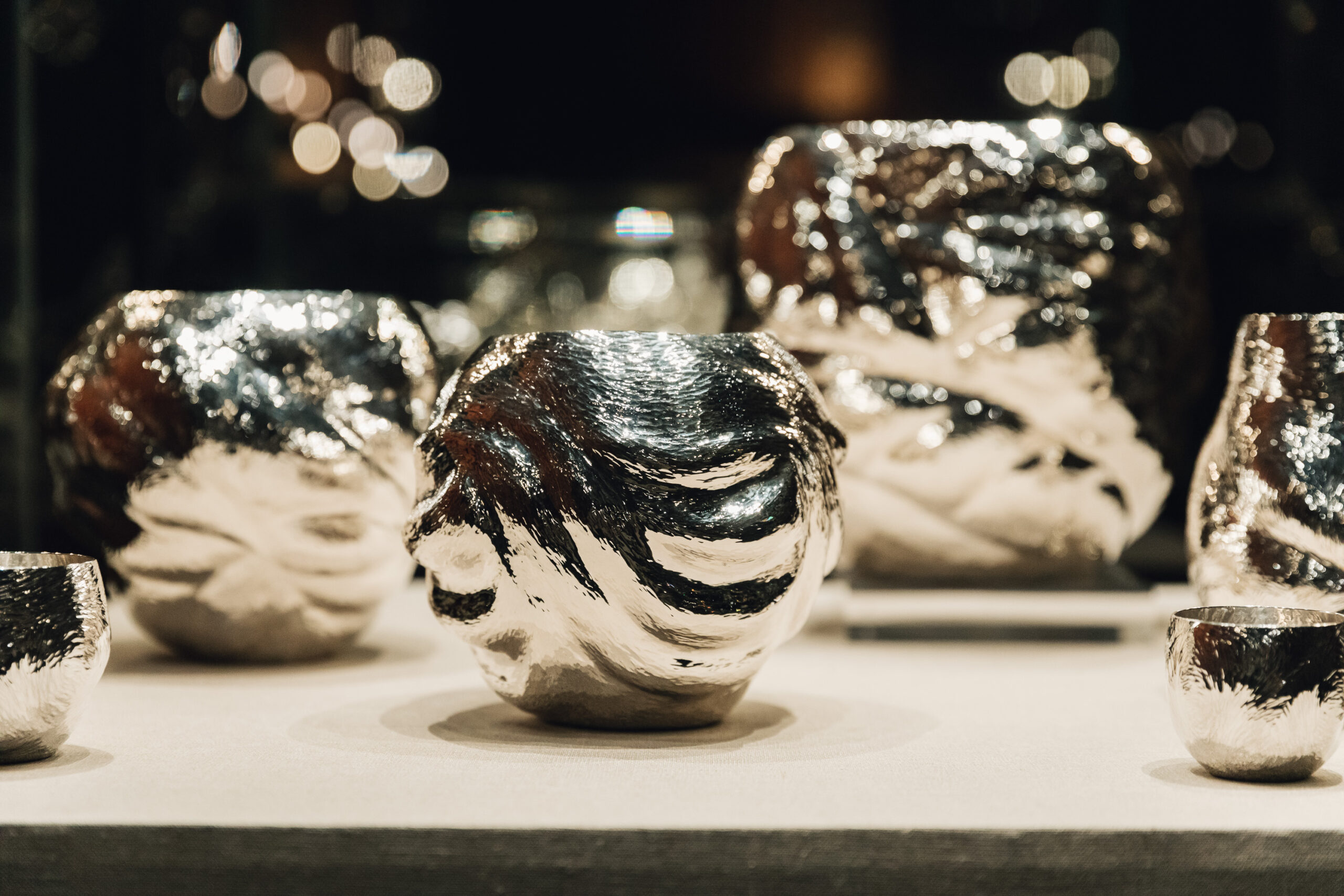
An assortment of silver vessels made by Ndidi Ekubia (1973–), 2001–2020.
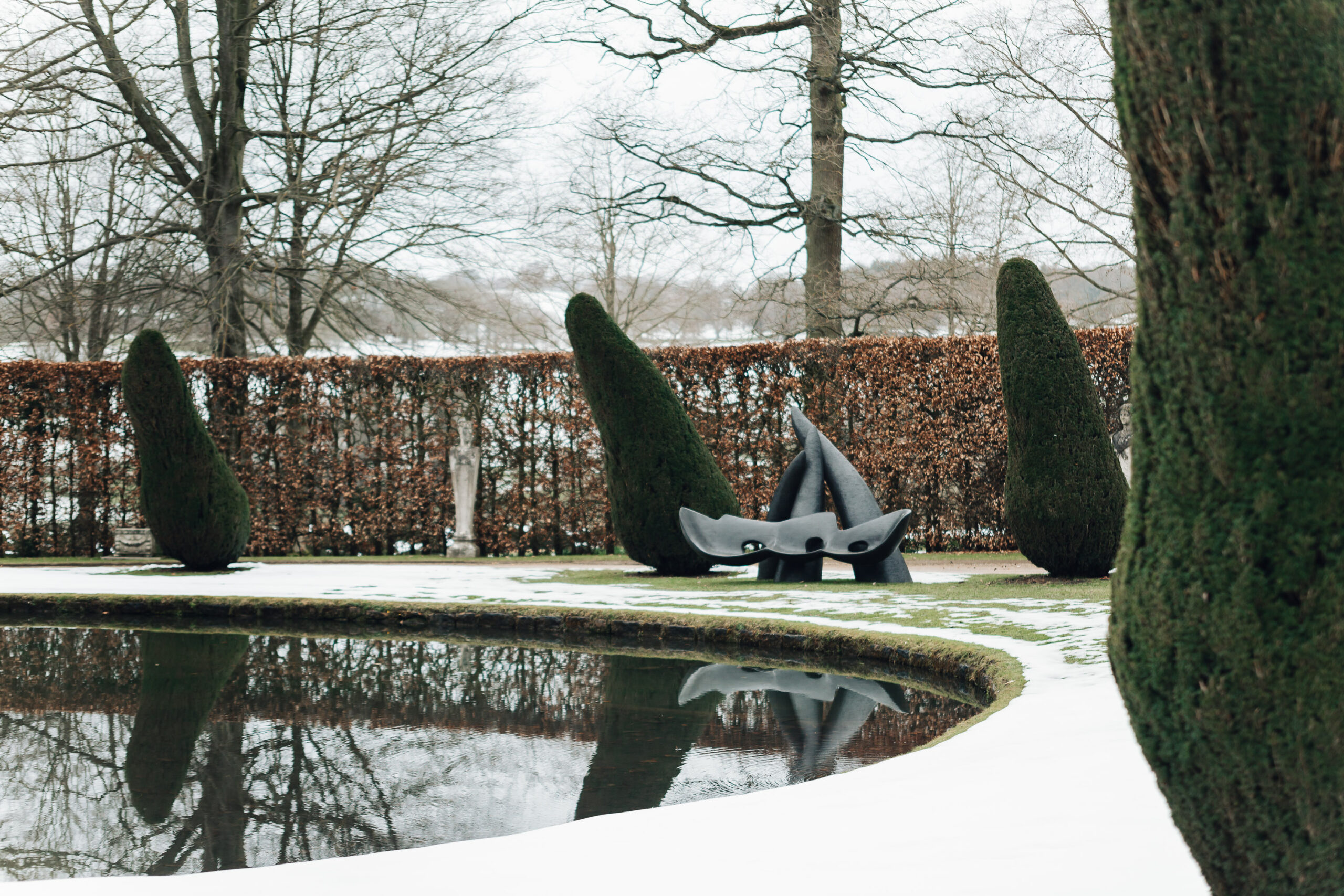
Illusion-Reality-Truth bench made by Wendell Castle (1932–2018), 2015.
But there are also more gentle insertions, such as Samuel Ross’s marble-and-steel Amnesia or platelet apparition? in the house’s glyptotheque, the silver hollowware of Ndidi Ekubia, who uses traditional chasing methods to abstract effect, and even Wendell Castle’s sculptural bronze bench, whose massing and color pairs naturally with the topiary of the garden.
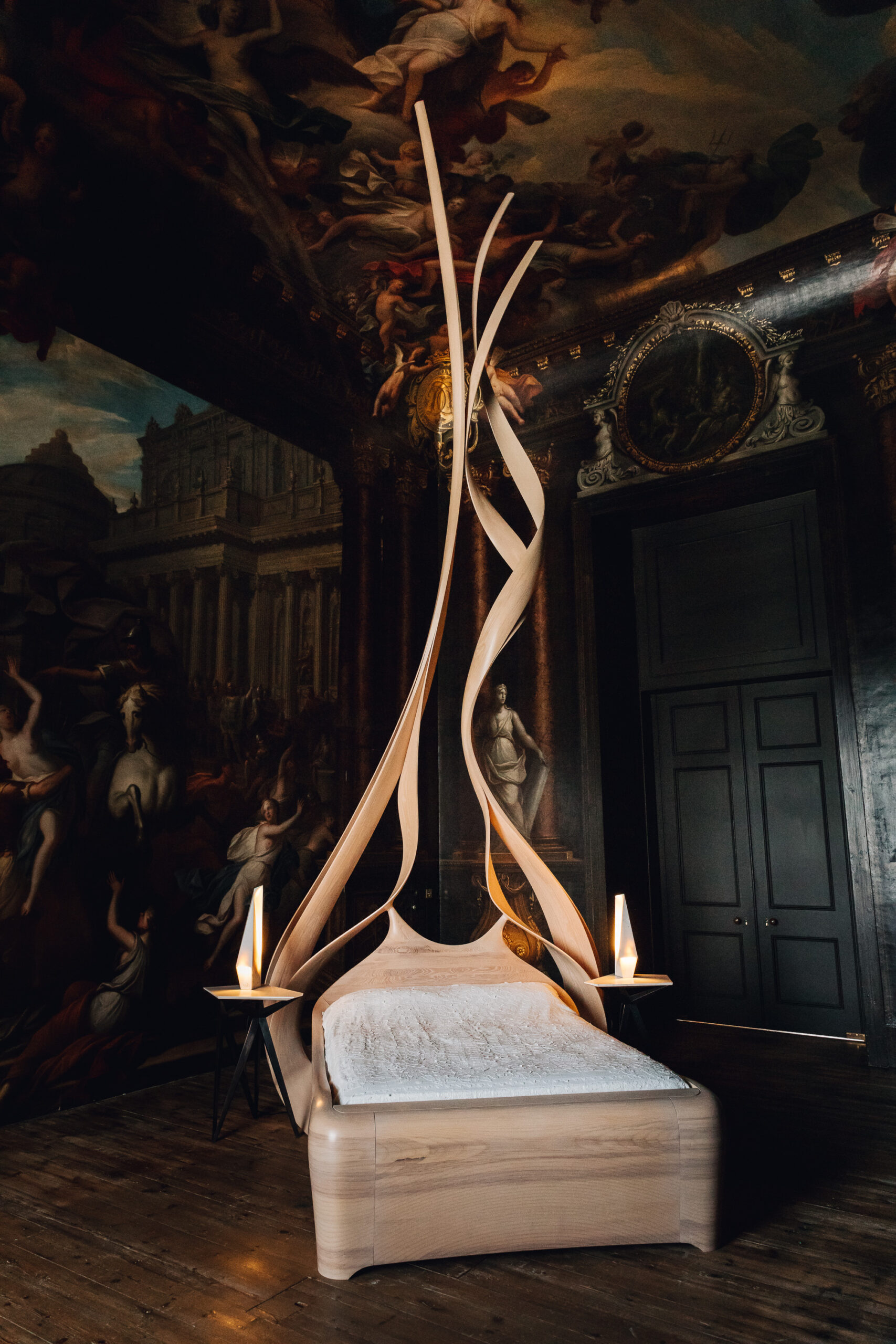
Enignum bed VIII, 2015, and brackets, 2022, made by Joseph Walsh (1979–).
Such placements subtly recall the modus operandi of architect Robert Adam, the guiding light of eighteenth-century English design, who “appreciat[ed] that it would be bad manners, and bad for business, to make any violent break with established traditions.” Rather, in a house that has sheltered sixteen generations of Cavendishes, decorating—or in this case curating—is a matter both of renewal and remembering, as the triumphs of a constantly changing present first take their place beside, and then become, treasured heirlooms.

